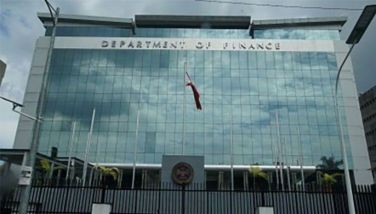Gov’t releases policy on vessel monitoring mechanism
MANILA, Philippines — The government has finally released its policy on a vessel monitoring mechanism that aims to put a stop to the continued increase in cases of illegal commercial fishing within municipal waters.
The Department of Agriculture-Bureau of Fisheries and Aquatic Resources (DA-BFAR) has signed Fisheries Administrative Order 260 which states the rules and regulations on the implementation of vessel monitoring measures (VMM) and electronic reporting system (ERS) for commercial Philippine fishing vessels.
The order aims to enhance monitoring operations and law enforcement, to aid in seafood traceability and catch documentary requirements of the government and to ensure safety of fishermen.
Last month, the local unit of international organization Oceana Philippines threatened to sue BFAR before the Supreme Court for its failure to implement the policy.
The rules for the vessel monitoring should have been implemented since October 2016 as the mechanism would allow the government to track the behavior of commercial fishers and if they are encroaching on municipal waters.
The Philippines is a signatory to the Convention on the Conservation and Management of Highly Migratory Fish Stocks in the Western and Central Pacific Ocean, which means the country must implement management measures such as the vessel monitoring system (VMS).
The Amended Fisheries Code also provides that no commercial or distant water fishing vessel shall engage in fishing activity without complying with the VMM.
Based on the published policy, the VMS will apply to all licensed commercial fishing vessels authorized by BFAR to operate in the high seas.
As to implementation, vessels with 50 to 99 gross tons (GT) will be within one year, while those with 30 to 49 GT will be within two years.
All vessels weighing more than 100 GT must have installed a DA-BFAR type approved VMS immediately.
The ERS, meanwhile, will be used to record and transmit catch data which will include species of fish caught, volume, vessel activity, port of origin and arrival.
The VMM to be installed onboard catcher vessels must be in accordance with the approved type and minimum standards set by BFAR and must be registered and accredited by the Department of Information and Communications Technology-National Telecommunications Commission.
Fishing vessels should also keep their VMM activated at all times and will be required to report its positions at least 24 times or more per day.
Non-compliance to the VMM may lead to the confiscation of catch, suspension or revocation of license and an administrative fine equivalent to twice the value of the catch.
There will also be fine of P250,000 for small-scale commercial fishing, P500,000 for medium-scale, and P2.5 million for large-scale.
Upon conviction, penalties include imprisonment of six months to two years and fine twice the amount of the administrative fine.
- Latest
- Trending





























